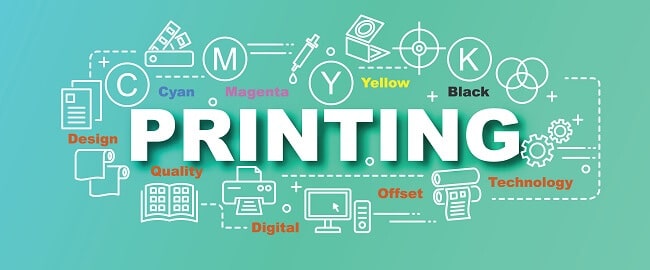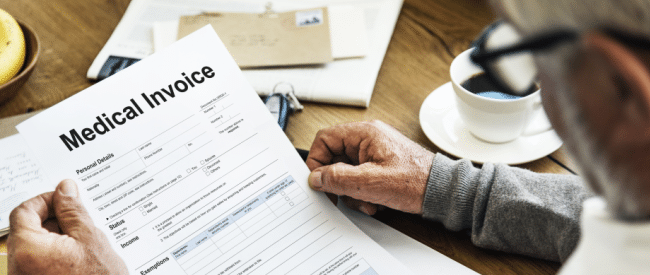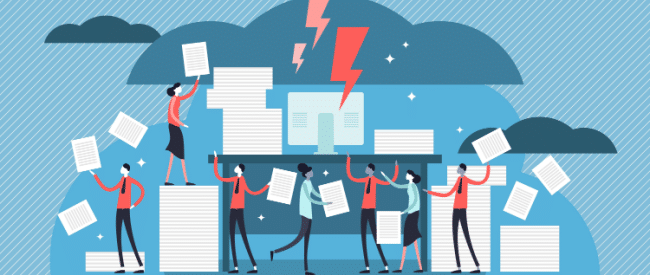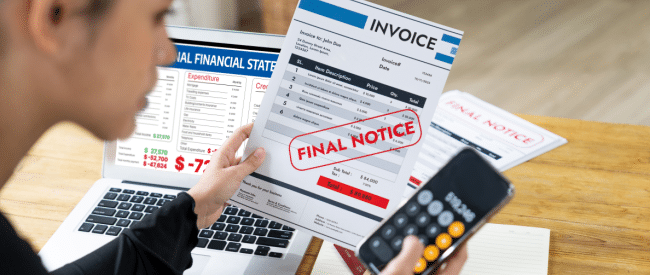While digital gets a lot of attention, paper remains a cornerstone of any customer communications program. A majority of Americans continues to receive bills by mail and legal documents are regularly sent by Certified Mail®.
You don’t have to be Gutenberg to take advantage of the power of print communications. But even Gutenberg might have trouble optimizing the process today without a grasp of modern-day printing language and jargon.
So here’s a handy guide to some key terms that will help you better understand the production of your customer mailings after creating the documents in Nordis’ Expresso® customer communications management system:
Mailing package
The mailing package consists of everything being sent: main document; inserts, if any; return envelopes, if any; and an envelope for sending the enclosures. The building blocks are paper type, envelope type, and ink printing technique.
Paper
Paper comes in all shapes, sizes, colors and textures, but only a few are generally used for transactional billing and compliance mailings. The most common type for statements is 24-pound, 8 ½” x 11” sheets of non-glossy plain white paper, with perforation for a remit coupon. This paper is also known as 60-pound offset paper.
- Ancillary sheets would use the same paper without perforation.
- Some types of mailings, such as proxy materials, often use lighter 20-pound letterhead (50-pound offset) because one more page can fit into a standard #10 business envelope.
Simplex vs duplex
Simplex refers to single-side pages and duplex has printing on both sides. It’s generally less expensive to print one duplex sheet than two simplex pages and also enables more pages of content to fit into various envelopes.
Inserts
Machine inserters add non-collated, pre-printed materials while at the same time folding the primary document(s) and place everything into the outgoing envelope/mailing package.
- One type of insert is preprinted #9 reply or remittance envelopes often included in transactional communications to facilitate mailed-in payments.
- Another is 8 ½” x 3 ½” offset print, glossy or non-glossy full-color ads, which can be produced by Nordis or brought in separately and inserted. Because they are approximately the size of a dollar bill, they are also called buckslips.
- Nordis inserting machines can accommodate up to 7 or more collated sheets, depending on envelope type.
Buckslip inserts are popular because they enable additional messaging within a mailing package without increasing the fixed postage cost, giving our clients more bang for their buck (pun intended).
Nesting
This technique is used to print and collate a document and any additional pages that are printed inline with the core document in the proper order and fold them together.
Envelopes
A #10 envelope is a common, standard business mailing envelope, 4 1/8” high and 9 1/2” wide. It holds a maximum of 6 sheets of 24-pound paper. Companies can opt for envelopes with windows, to show the customer name and address and a return address printed on the primary document, or without, which requires a label or printing on the envelope and matching the document to the envelope. Window envelopes are generally less expensive because they remove a step from the production process.
For more pages, companies can choose 6” x 9.5” carrier envelopes. This envelope is generally used for 6-8 24-pound sheets or up to 10 20-pound sheets.
- Pages are folded in half versus into trifolds.
- 6” x 9.5” envelopes are costlier than #10 envelopes but first-class postage is the same for both types of envelopes provided the mailing package weight is less than 3.5 ounces.
The next size is a 9” x 12” envelope, which costs more and requires higher postage. It’s used if nine or more pages or inserts need to be inserted into the mailing package. There is no folding, which is why this mailing package type is often referred to as a “flat”. They also often include a slip sheet that shows the customer address and return address to show through a single, large window.
| Envelope Size |
24# 8.5″ x 11″ Page Count |
Fold Type | Max Insert Size |
| #10 (4 1/8″ x 9 1/2″) | 1 – 5 | Tri-fold | 3.5″ x 8.5″ |
| 6″ x 9.5″ | 6 – 8 | Bi-Fold | 5.5″ x 8.5″ |
| 9″ x 12″ | 9+ | No fold | 8.5″ x 11″ |
Ink printing options
There are four options:
- Black-and white laser is generally the least expensive. Quality is very good and speed is very fast. Companies have the option to use pre-printed shells with their color logo for the first page. Pre-perforated shells are used for pages with remittance coupons. Inserts are collated in real-time versus using machine inserters.
- High-speed color inkjet: Superfast, excellent quality. It’s roll-fed instead vs sheet-fed, so uses plain white paper, and offers on-demand perforation. It uses liquid ink so it provides full color for nearly the same price as B&W. Nordis’ recently acquired high-speed Ricoh inkjet printer prints the equivalent of 916 8 ½” x 11” duplex pages a minute.
- B&W on high-speed color inkjet: It’s more costly than laser but is faster, allows for perforation as needed, and eliminates the need for pre-printed shells.
- Color laser: The most expensive. It’s toner-based, so offers very high resolution and sharp colors. It’s used more often for marketing materials than billing documents.
For companies not using color inkjet for billing, it’s worth another look. In an article on the psychology of color, Fast Company noted that color can improve comprehension by 74%, an important factor in customer satisfaction and in getting paid.
My colleagues and I in Nordis’ client services group would be glad to help you evaluate your programs to capitalize on advanced full-color printing technology or find other ways to help you get the most out of your print—and—digital– communications. Just contact us or send a request to sales@nordistechnologies.com.







